
Benefits of Sustainable Furniture In Workspace Design
Eco-friendly and green initiatives have moved their way up the executive agenda over the last decade and now, increasingly, an organization’s sustainability agenda is becoming as important, if not more so, as its bottom line.
While profitability continues to remain a priority, we are seeing more stakeholders and employees expecting a tangible and measurable commitment to sustainable best practices.
As more businesses reveal their new green initiatives, innovative workplace design steps up as a corporation’s best tool to aid them on their road to environmental friendliness, by offering numerous opportunities for a sustainable office and/or sustainable workplace.
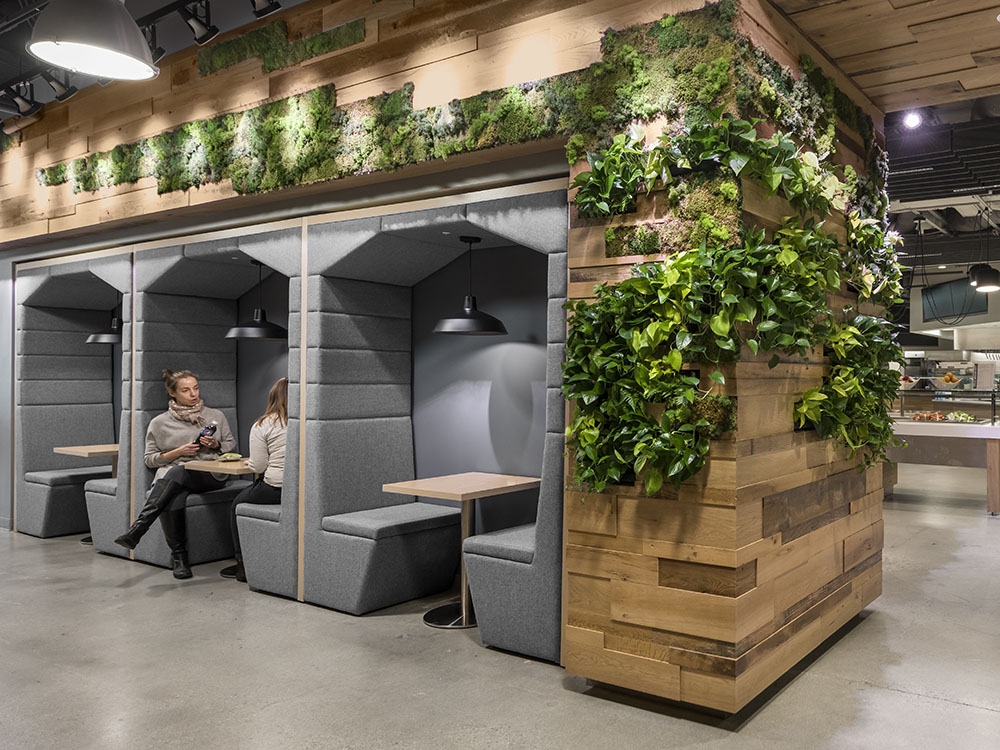
The built environment is responsible for nearly 40% of global carbon emissions, according to research published by the Green Building Council. With the pandemic negating the need to be physically present in the workplace as regularly, the remote working revolution has revealed a unique opportunity for corporations to reconsider their property requirements and thus, save money and energy by implementing a truly sustainable design.
This article will show how having a sustainable workplace begins at the design stage and the benefits of prioritizing sustainability when choosing furniture and materials to build your workplace of the future.
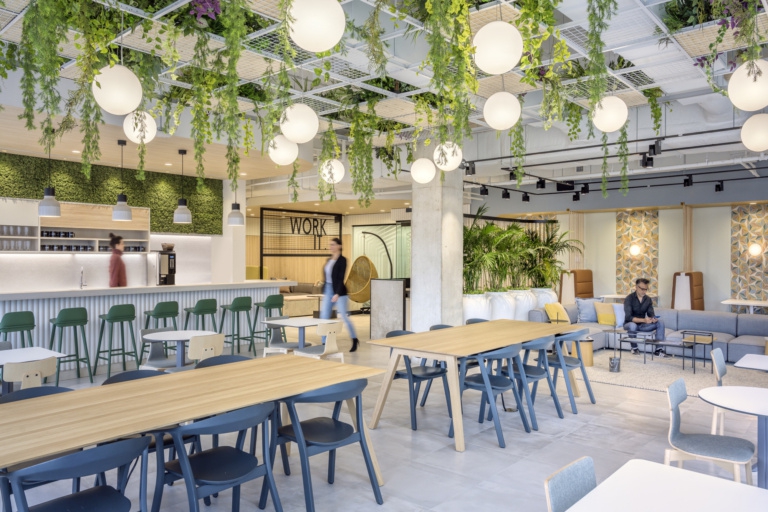
Sustainable design has a multitude of purposes, but at its core, seeks to reduce negative impacts on the environment, and prioritise the comfort and health of occupants. This can be achieved through reducing the consumption of non-renewable resources and minimizing waste.
As summarized by the US. GSA, Sustainable design principles include the ability to:
- Optimize site potential;
- Minimize non-renewable energy consumption;
- Use environmentally preferable products;
- Protect and conserve water;
- Enhance indoor environmental quality; and
- Optimize operational and maintenance practices.
There are countless ways to reduce energy costs and carbon footprints in the workplace, from simple considerations such as more natural lighting and better insulation to modular solutions for sustainability and revamping sustainable design architecture as a whole. However, the most impactful sustainable offices require authentic intention in the entire process of production, which considers the environment and the people in it. Meaning that sustainability efforts and intentions must be embedded from an early stage, with the production of sustainable office furniture and the importance of natural materials in workspaces not to be underestimated.
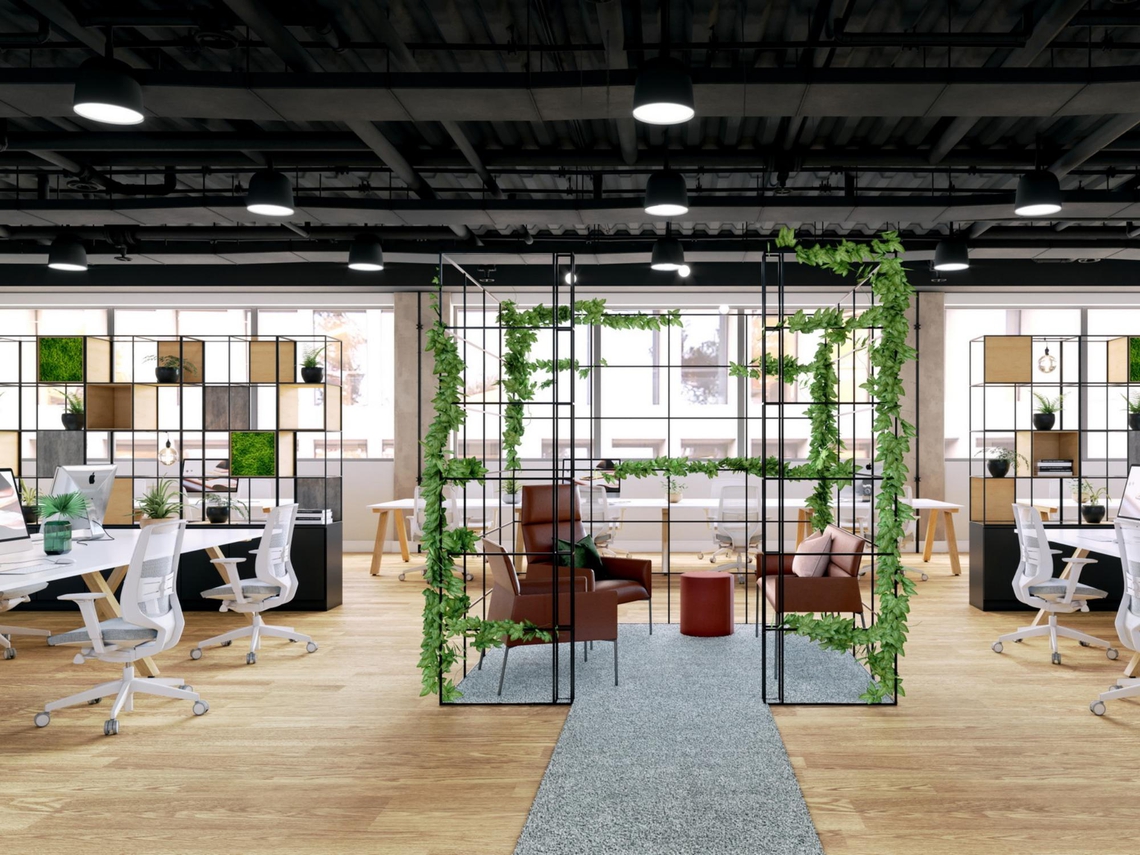
Declare Labels and Sustainability
The importance of natural materials in workspace design has never been more important than it is now, and one of the best ways to reduce embodied carbon is to manufacture furniture and fittings using bio-based materials such as wood, straw and bamboo.
Bio-based products typically require less energy to produce and have the potential to capture and store carbon through photosynthesis. As well as having a longer shelf-life, using natural materials saves money and makes office furniture reusable.
But how can corporations be sure which materials they’re using and how recyclable they are? Enter: the declare label.
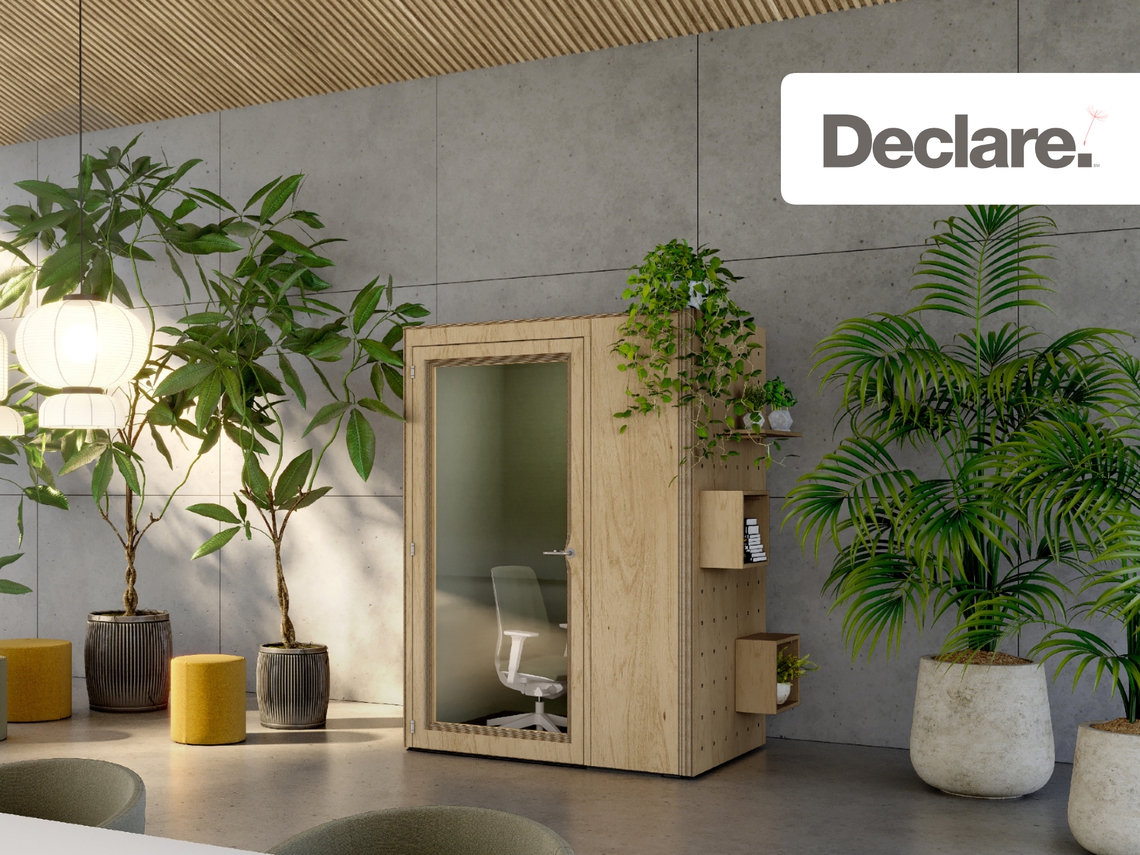
Issued by the International Living Future Institute, a Declare Label gives the ultimate in material transparency. Declare takes complex chemical analysis and raw material source location information and provides it to consumers in an easy-to-use label.
At Spacestor, six of our key products, Palisades Grid, Verandas, Railway Carriage, Residence Connect, Residence Max and Forte, now have Declare labels, which succinctly disclose the ingredients each product uses, the sourcing of said materials, and life cycle information, showing that our products don’t contain harmful chemicals, can be trusted and are quality assured.
By encouraging the use of Declare labels in furniture design and simplifying the exchange of complex ingredient information, we can positively change the materials marketplace to support human and environmental health.
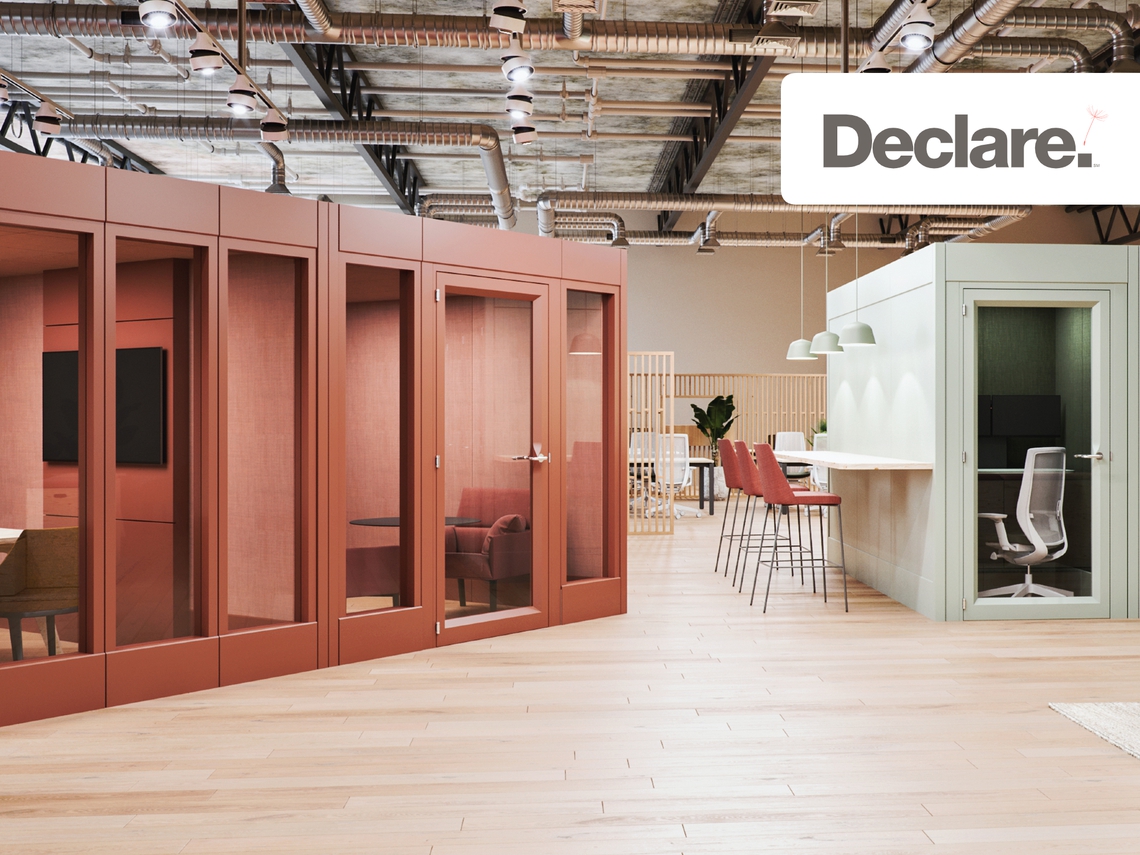
At Spacestor, we pride ourselves on our innovative designs which are efficient by nature. All of our designs are made for the workplace of the future, and as a result are inherently space saving and sustainable.
For example, our Verandas make a dramatic space saving when compared with the efficiency of meeting room space, as well as being 99% reusable. Our modular solutions such as our Bleachers are agile and adaptable, and our Signature Storagewall is completely re-configurable, avoiding cost and waste produced by discarding existing products to build new ones elsewhere. Yet most importantly, Spacestor products are at least 85% recyclable, so if there’s ever a need to discard our furniture, impact on the environment is minimal.
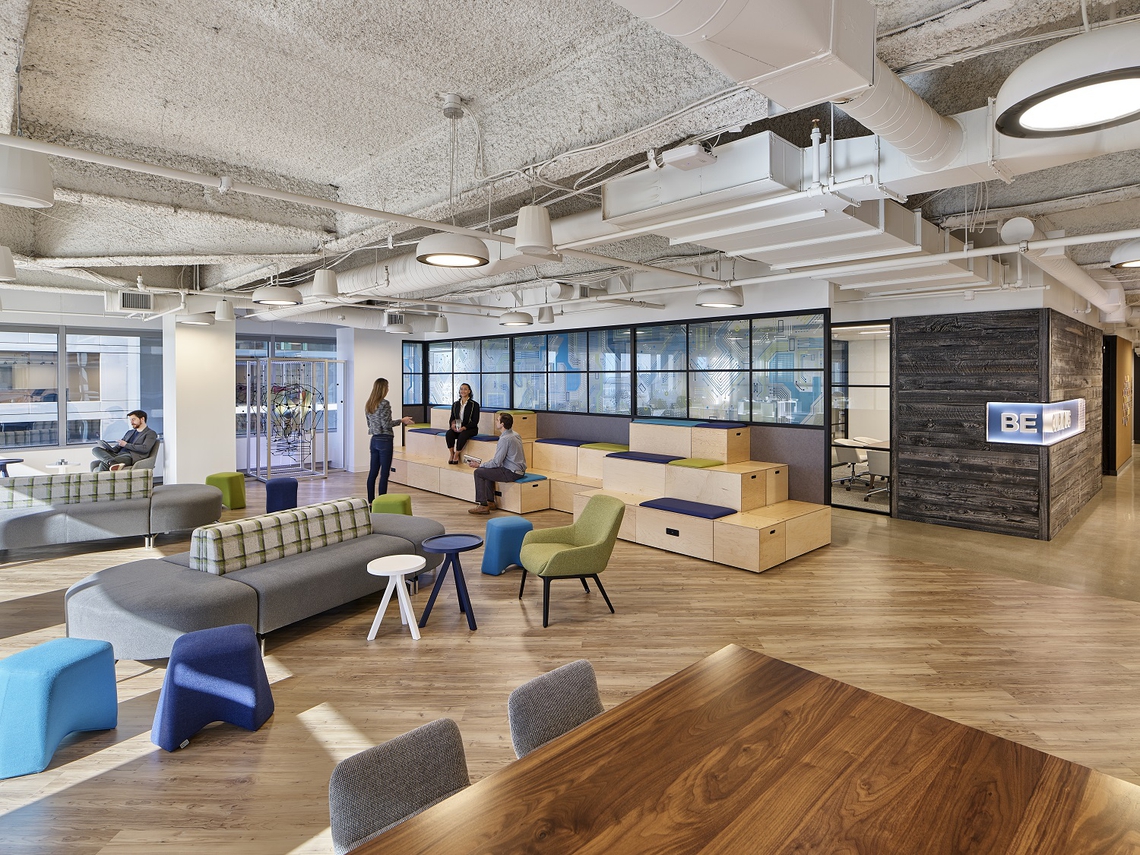
An effective way of seeing if a design is sustainable is to experiment with furniture and layouts to ensure they’re fit for purpose before committing. In our project with Architecture firm, MCM, this was the approach taken, with a number of trials testing out what worked best for employees and management, ensuring a truly future-proof solution. Our Palisades in particular with their modular design left open a lot of room for movement in the future, with Design Director, Deepak Parmar commenting, "I think it's fantastic that if this particular system doesn't work in this exact configuration, we don't have to think about waste we can just reuse the components and create a new type of space."
The importance of using recyclable, reusable and eco-friendly materials in all aspects of workplace design is still key. Avoid plastics and opt for bio-based materials to give your workspace breathable, healthy materials that last into the future.
Simply using natural materials in office design such as plants has a huge impact on occupational health with a biophilic design offering several benefits in the workplace, including stress reduction, improved productivity and better air quality.
If in doubt, opt for furniture with Declare labels, and ensure you know what ingredients are used in your furniture.
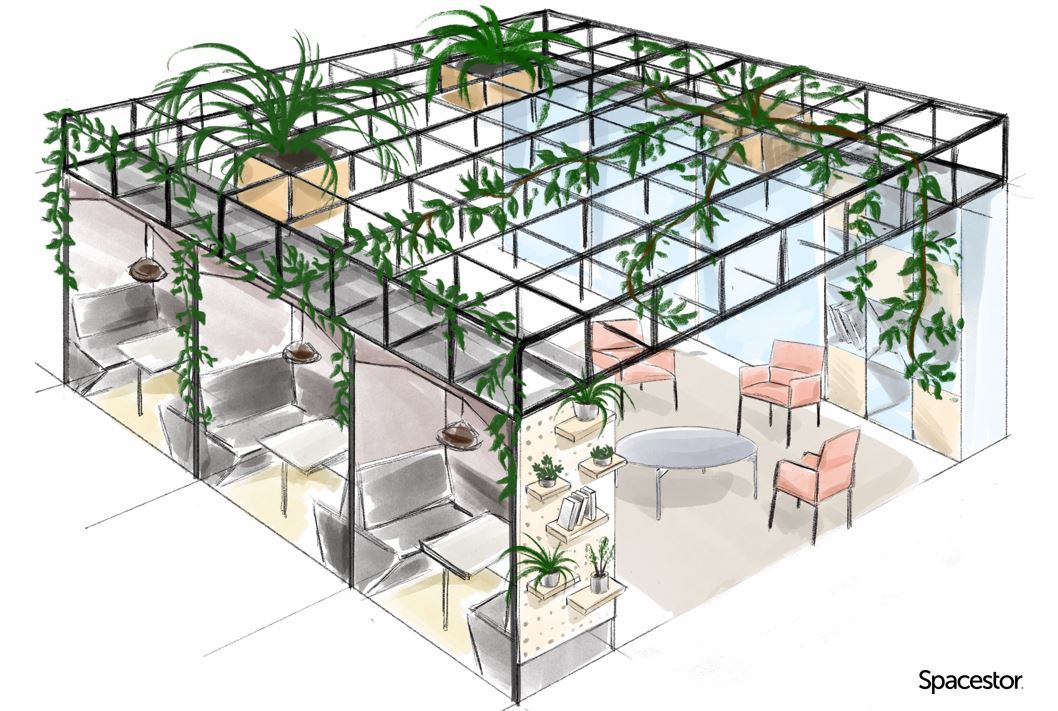


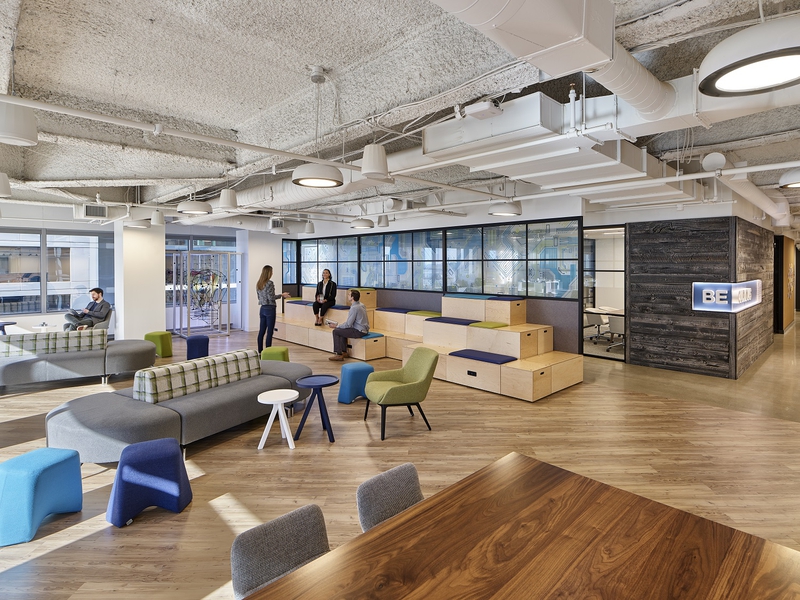
A 30,000-square foot state-of-the-art collaborative workspace in the heart of Philadelphia, designed to promote creativ…
SERVICES FINANCIERS
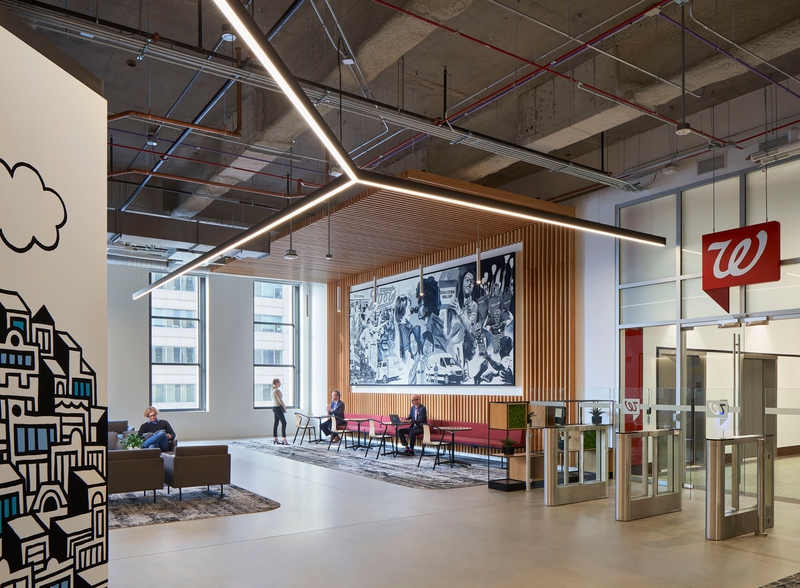
Drawing on their rich, Chicago-based heritage, Stantec have designed a stunning new workspace for leading retailer, Wal…
FABRICATION
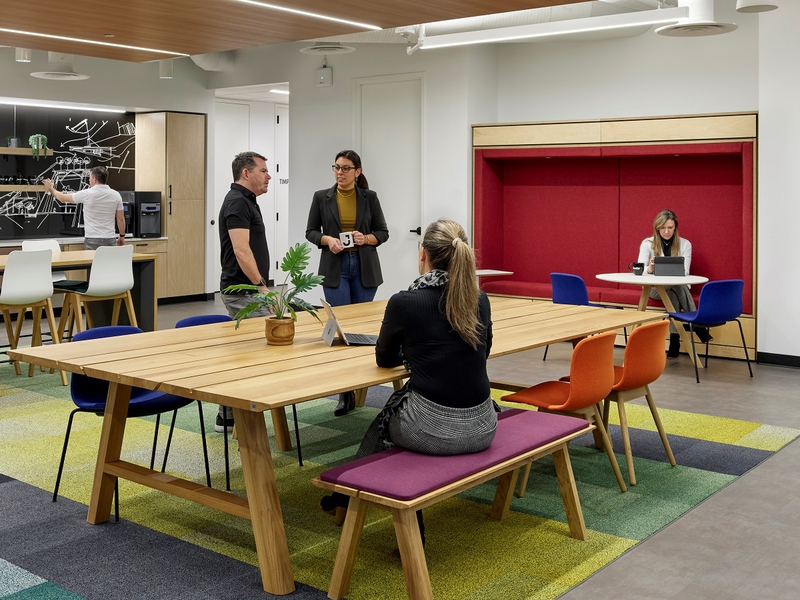
Diversity of expertise and perspectives is instrumental to Jacobs' solutions based approach to complex problems
ARCHITECTURE & CONCEPTION, TECHNOLOGIE & INFORMATIQUE